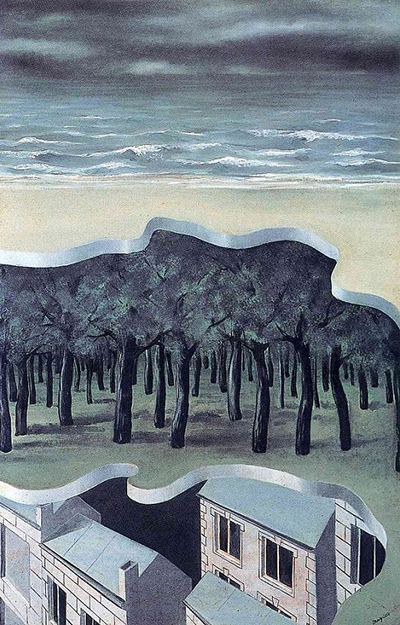Rene Magritte's Popular Panorama is a landscape painting, though it is far from what many would see as a conventional landscape. The canvas was owned by Paul Gustaaf van Hecke, Magritte's first art dealer, for many years.
The canvas is split into three distinct elements, with a beach and sea portrayed in the top section. Immediately beneath that is a forest, and beneath that is a stylised urban street, featuring what looks like houses. Each of these sections is divided from the other by what looks like a floor, which has bee cut away by some kind of tool. This gives the impression that each of the three landscapes resides in its own section of a wooden box.
The work was produced in 1926, when Magritte was 28, and it marks an important step forward in his conception of space. While Cubism had opened the door to conceptions of space, nothing quite like Magritte's work here had yet appeared. Each landscape looks like it has been commodified on some way, like separate items for sale in a box on a shelf. There is a kind of magic to it, as though someone has packed up these landscapes so that they can be transported and displayed, as though in a magic box.
An important point to consider in the work is its portrayal of trees, a subject which fascinated Magritte. In this work, the trees have no roots; they simply spring out the ground. This portrayal of trees was not uncommon throughout Magritte's career, and perhaps reflects a sense of urban disconnection and rootlessness in his life.
As with much of Magritte's work, there is a playfulness here, as well as perhaps something slightly more sinister. He is asking the viewer to alter their perspective on the natural world, to see it as the modern world has made it. The landscapes may exist simultaneously, but they are boxed off, separated both from each other and the viewer, until the artists cuts away each layer of the box and shows them. Overall, it is an interesting work, which gives a number of telling indications as to the shape Magritte's work would take in the future.




